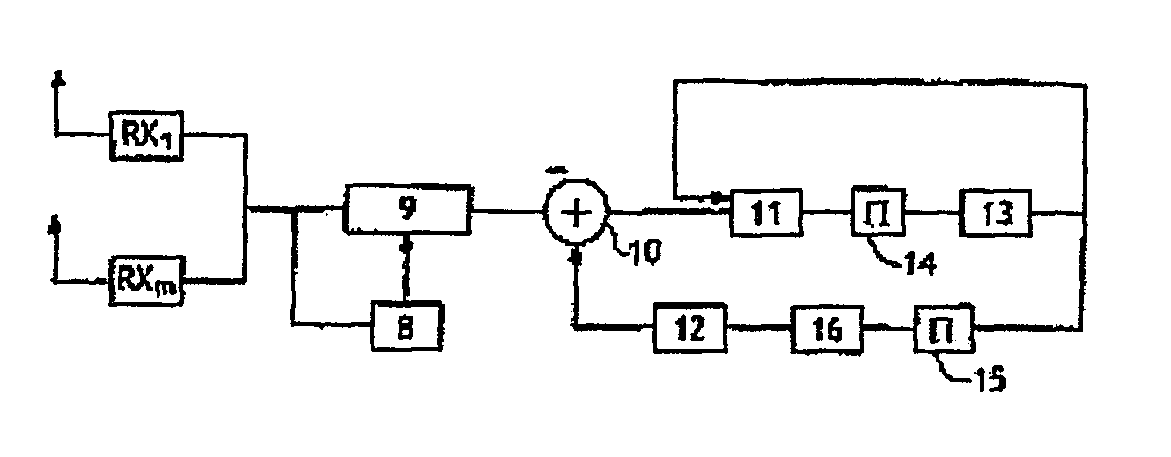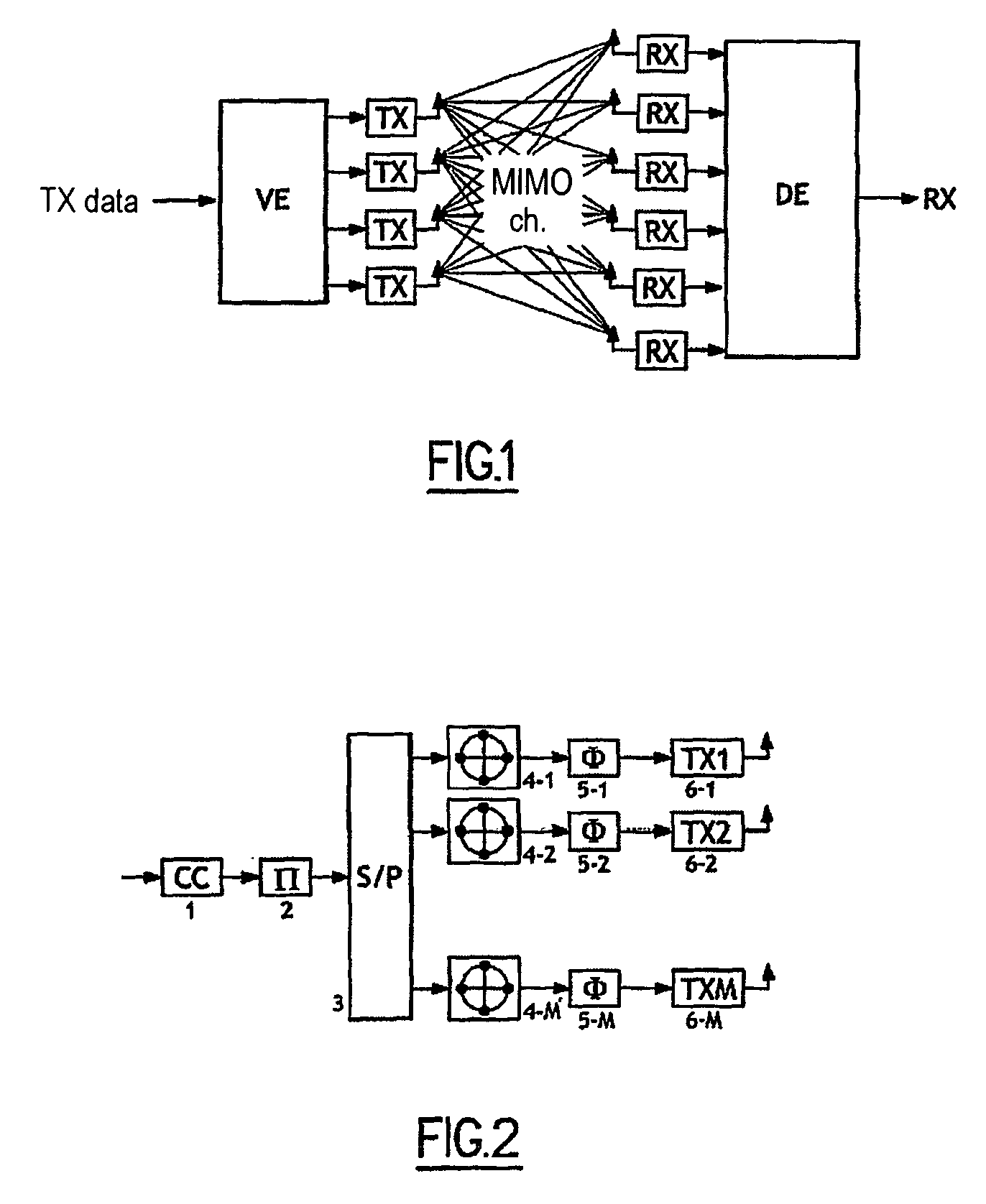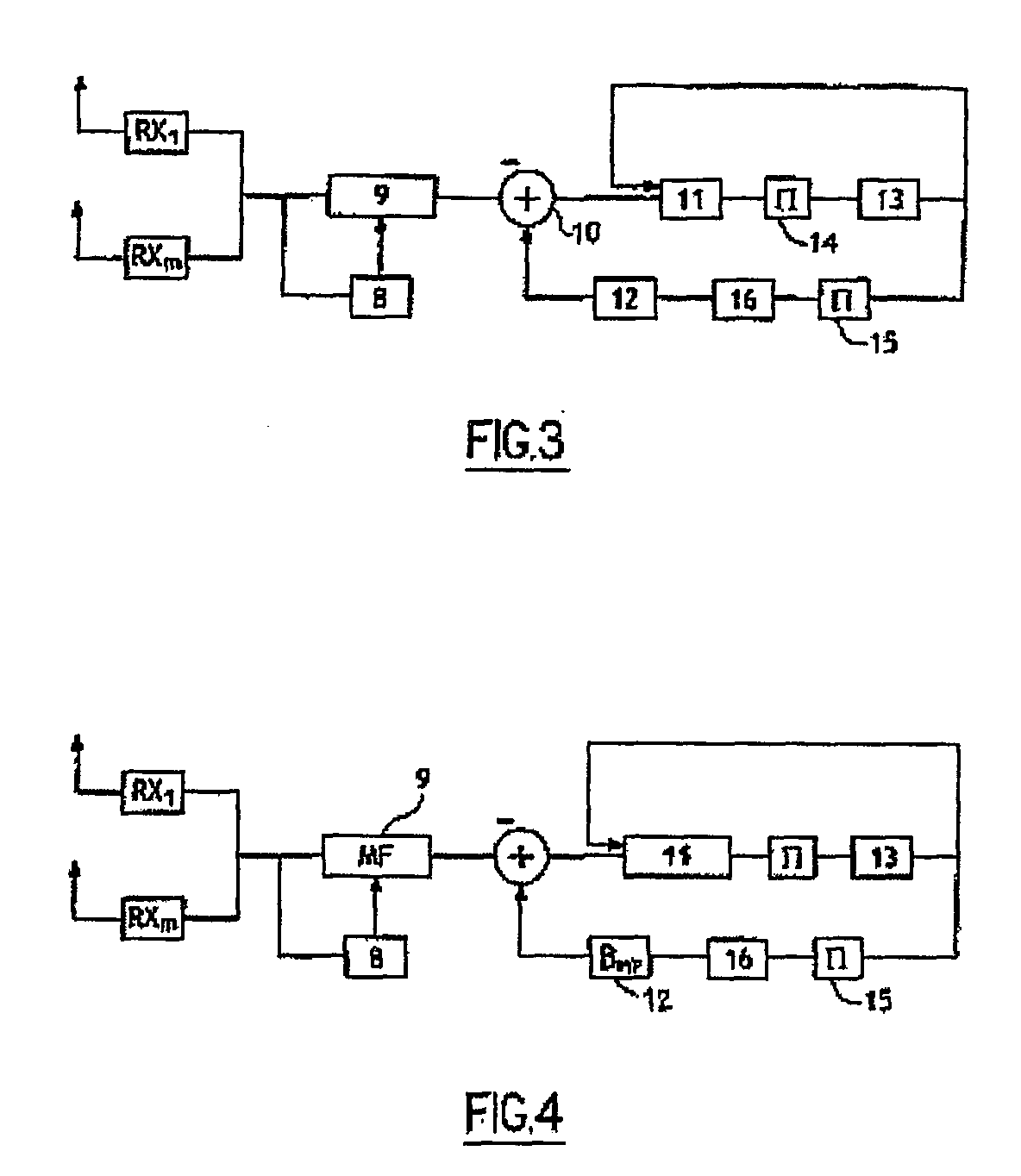Iterative decoding and equalingzing method for hgih speed communications on multiple antenna channels during transmission and reception
a technology of transmission and reception and equalization method, which is applied in the direction of amplitude demodulation, pulse technique, baseband system details, etc., can solve the problems of limiting the application of the method, affecting the effect of the amplitude demodulation, and affecting the amplitude of the signal
- Summary
- Abstract
- Description
- Claims
- Application Information
AI Technical Summary
Benefits of technology
Problems solved by technology
Method used
Image
Examples
Embodiment Construction
BLAST Technique and ST-BICM Coding
[0043]FIG. 1 is a general diagram of a BLAST architecture.
[0044] After space-time interleaving and space demultiplexing, data coded in a single vectorial encoding device EV is transmitted by a plurality of transmit antennas TX; at the other end of the MIMO channels, the transmitted signals are received by a plurality of receiver antennas RX that forward them to decoding means DE (MIMO channels) at the output whereof the data is recovered.
[0045] The following description relates to frequency-selective MIMO channels. The presence of inter-symbol interference increases the complexity of the receiver.
[0046]FIG. 2 shows the ST-BICM general communications model.
[0047] On transmission, the data is corrector channel coded (1) (convolutional code, turbocode, LDPC code, etc.), interleaved (2) at the binary level, space demultiplexed (3) and, for each layer, modulated (4-1 to 4-M). After shaping filtering (5-1 to 5-M), the modulated data is forwarded to tr...
PUM
 Login to View More
Login to View More Abstract
Description
Claims
Application Information
 Login to View More
Login to View More - R&D
- Intellectual Property
- Life Sciences
- Materials
- Tech Scout
- Unparalleled Data Quality
- Higher Quality Content
- 60% Fewer Hallucinations
Browse by: Latest US Patents, China's latest patents, Technical Efficacy Thesaurus, Application Domain, Technology Topic, Popular Technical Reports.
© 2025 PatSnap. All rights reserved.Legal|Privacy policy|Modern Slavery Act Transparency Statement|Sitemap|About US| Contact US: help@patsnap.com



